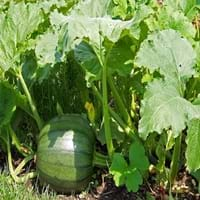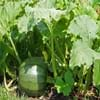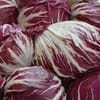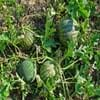Life Span
Annual or Biennial
Perennial
Type
Vegetable
Bulb or Corm or Tuber
Origin
South America
South America, Argentina
Types
Arikara squash
Arikara squash
Boston marrow
Buttercup squash
Candy Roaster
Not Available
Number of Varieties
Not Available
Habitat
Clay soil areas, Loamy soils
Temperate Regions
USDA Hardiness Zone
2-11
5-9
Sunset Zone
A1, A2, A3, H1, H2, 1a, 1b, 2a, 2b, 3a, 3b, 4, 5, 6, 7, 8, 9, 10, 11, 12, 13, 14, 15, 16, 17, 18, 19, 20, 21, 22, 23, 24
21,22
Habit
Prostrate/Trailing
Clump-Forming
Flower Color
Yellow, Gold
Light Blue, Light Purple, Silver, Sky Blue
Flower Color Modifier
Bicolor
Bicolor
Fruit Color
Blue, Gray Green
Not Available
Leaf Color in Spring
Dark Green
Green, Light Green, Gray Green
Leaf Color in Summer
Green, Dark Green
Light Green
Leaf Color in Fall
Green, Dark Green, Yellow green
Several shades of Green
Leaf Color in Winter
Not Available
Light Green
Leaf Shape
Reniform
Grass like
Sunlight
Full Sun
Full Sun, Partial Sun, Partial shade
Growth Rate
Very Fast
Medium
Type of Soil
Loam
Clay, Loam, Sand
The pH of Soil
Acidic, Neutral
Acidic, Neutral, Alkaline
Soil Drainage
Well drained
Well drained
Bloom Time
Indeterminate
Early Spring, Spring, Late Winter
Tolerances
Drought
Drought
Where to Plant?
Ground
Container, Ground
How to Plant?
Seedlings
By dividing rhizomes, tubers
Plant Maintenance
Medium
Medium
Watering Requirements
Keep the Soil well drained
Average Water Needs, Do Not over Water, Requires regular watering
In Summer
Lots of watering
Lots of watering
In Spring
Moderate
Moderate
In Winter
Average Water
Average Water
Soil pH
Acidic, Neutral
Acidic, Neutral, Alkaline
Soil Type
Loam
Clay, Loam, Sand
Soil Drainage Capacity
Well drained
Well drained
Sun Exposure
Full Sun
Full Sun, Partial Sun, Partial shade
Pruning
Cut or pinch the stems, Pinch or prune as they grow to promote branching and bushiness, Remove damaged leaves, Remove dead branches, Remove dead leaves
Remove damaged leaves, Remove dead branches, Remove dead leaves
Fertilizers
All-Purpose Liquid Fertilizer, organic fertlizers, Water soluble fertilizers
All-Purpose Liquid Fertilizer
Pests and Diseases
Anthracnose, Aphids, Cucumber beetles, Leaf spot, Red blotch, Spider mites, Verticillium Wilt, Whiteflies
Slugs, Snails
Plant Tolerance
Heat Tolerance, Humidity
Drought
Flower Petal Number
Single
Single
Foliage Texture
Coarse
Medium
Foliage Sheen
Matte
Matte
Attracts
Aphids, Beetles, Flies, Spider Mites
Bees, Birds, Hummingbirds
Allergy
Not Available
Not Available
Aesthetic Uses
Not Available
Showy Purposes
Beauty Benefits
Not Available
Not Available
Environmental Uses
Air purification
Air purification
Medicinal Uses
Not Available
No Medicinal Use
Part of Plant Used
Fruits
Flowers
Other Uses
Used As Food
Not Available
Used As Indoor Plant
No
Yes
Used As Outdoor Plant
Yes
Yes
Garden Design
Edible, Herb / Vegetable
Container, Lawns and Turf, Mixed Border, Rock Garden / Wall, Wildflower
Botanical Name
CUCURBITA maxima 'Jarrahdale'
Ipheion uniflorum
Common Name
Jarrahdale Pumpkin, Winter Pumpkin
Spring Starflower, Springstar
In Hindi
Jarrahdale Pumpkin
Spring Starflower
In German
Jarrahdale Pumpkin
Frühling Borretsch
In French
Jarrahdale Pumpkin
Spring Starflower
In Spanish
Jarrahdale Pumpkin
primavera Flor de estrella
In Greek
Jarrahdale Pumpkin
άνοιξη starflower
In Portuguese
Jarrahdale Pumpkin
primavera Starflower
In Polish
Jarrahdale Pumpkin
Wiosna Starflower
In Latin
Jarrahdale Pumpkin
Spring Starflower
Phylum
Tracheophyta
Magnoliophyta
Class
Magnoliopsida
Lilopsida
Order
Cucurbitales
Asparagales
Family
Cucurbitaceae
Liliaceae
Clade
Angiosperms, Eudicots, Rosids
Angiosperms, Monocots
Tribe
Not Available
Gilliesieae
Subfamily
Not Available
Allioideae
Number of Species
Not Available
Season and Care of Jarrahdale Pumpkin and Spring Starflower
Season and care of Jarrahdale Pumpkin and Spring Starflower is important to know. While considering everything about Jarrahdale Pumpkin and Spring Starflower Care, growing season is an essential factor. Jarrahdale Pumpkin season is Fall and Spring Starflower season is Fall. The type of soil for Jarrahdale Pumpkin is Loam and for Spring Starflower is Clay, Loam, Sand while the PH of soil for Jarrahdale Pumpkin is Acidic, Neutral and for Spring Starflower is Acidic, Neutral, Alkaline.
Jarrahdale Pumpkin and Spring Starflower Physical Information
Jarrahdale Pumpkin and Spring Starflower physical information is very important for comparison. Jarrahdale Pumpkin height is 30.00 cm and width 300.00 cm whereas Spring Starflower height is 10.20 cm and width 5.10 cm. The color specification of Jarrahdale Pumpkin and Spring Starflower are as follows:
Jarrahdale Pumpkin flower color: Yellow and Gold
Jarrahdale Pumpkin leaf color: Dark Green
Spring Starflower flower color: Light Blue, Light Purple, Silver and Sky Blue
- Spring Starflower leaf color: Green, Light Green and Gray Green
Care of Jarrahdale Pumpkin and Spring Starflower
Care of Jarrahdale Pumpkin and Spring Starflower include pruning, fertilizers, watering etc. Jarrahdale Pumpkin pruning is done Cut or pinch the stems, Pinch or prune as they grow to promote branching and bushiness, Remove damaged leaves, Remove dead branches and Remove dead leaves and Spring Starflower pruning is done Remove damaged leaves, Remove dead branches and Remove dead leaves. In summer Jarrahdale Pumpkin needs Lots of watering and in winter, it needs Average Water. Whereas, in summer Spring Starflower needs Lots of watering and in winter, it needs Average Water.





